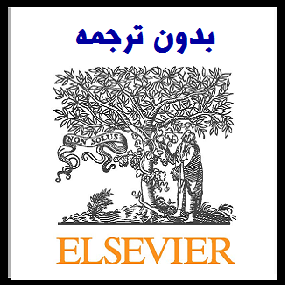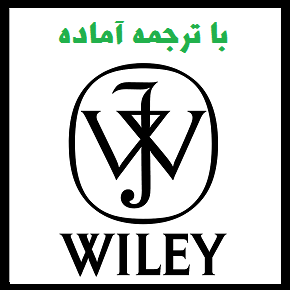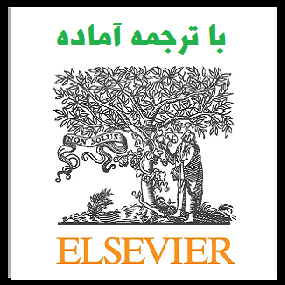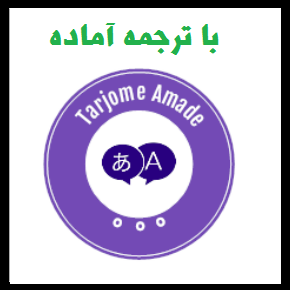مقاله انگلیسی رفتار سازه ای تیرهای بتن آرمه ترک خورده تحت بارگذاری پایدار (2018 الزویر)


| عنوان فارسی مقاله | رفتار سازه ای تیرهای بتن آرمه ترک خورده تحت بارگذاری پایدار |
| عنوان انگلیسی مقاله | Structural behavior of corroded reinforced concrete beams under sustained loading |
| نمونه مقاله انگلیسی | ۱٫ Introduction
Reinforced concrete (RC) is one of the most widely used construction materials in the world. RC structures are usually regarded as permanent structures that can be free of severe degradation problems for a long period time owing to their good service performance. Although steel bars embedded in concrete are normally protected against corrosion during the service life of a structure, the concrete cover can deteriorate under the effects of some aggressive agents, leading to corrosion of the steel bars in concrete. For RC structures, corrosion of steel bars is one of the most important factors causing durability problems [1]. On the one hand, corrosion can lead to the cross-sectional loss of steel bars and degradation of their mechanical properties thereby reducing the bearing capacity of a structural member. On the other hand, steel bars corrosion can also degrade the bonding behavior between the concrete and steel, thereby inducing stiffness reduction, which can increase the deflection during the service life. Much research has been done on behavior of corroded RC beams. However, the most previous work has focused on the short-term behavior of corroded RC beams where the beam specimens were pre-corroded before loading to failure. Cabrera [2], Mangat et al. [3] and Torres-Acosta et al. [4] found that transverse crack width and crack spacing increased with the corrosion degree, but the quantity of cracks decreased. Actually, corrosion of steel bars normally takes place while a structure is subjected to a sustained load. The sustained load may lead to an accelerating effect on the corrosion process [5,6]. Furthermore, beam behavior under the combined effects of loading and corrosion is time-dependent. To predict the service life of corroded RC structures, it is important to clarify the time-dependent behavior of the corroded beam. Combined action of loading and corrosion was considered in the experiments by many researchers, and different current densities have been applied in the accelerated corrosion process. Experimental study by Ballim et al. [5] showed that the sustained load effect on the deflection of a RC beam could not be ignored during the corrosion process. The current density applied in the experiment carried out by Ballim et al. was 400 lA/cm2 , which could get an ideal corrosion degree in a short period of time. However, the common current density that governs the corrosion rate of actual inservice corroding concrete structures normally ranges between 0.1 and 100 lA/cm2 [7,8]. Additionally, the nominal current density applied in the accelerated corrosion testing should be less than 200 lA/cm2 [9]. The experiment carried out by El Maaddawy et al. [10] and Malumbela et al. [11,12] used a relatively low current density. EI Maaddawy et al. monitored the corrosion crack development and the deflection of the testing beams under the current density of approximately 150 lA/cm2 during the testing process; moreover, results showed that the sustained load significantly reduced the initiation time of corrosion-induced cracking and slightly increased the corrosion crack’s width. The results also indicated that the flexural crack induced by the sustained load could initially increase the corrosion rate of the steel bars. Malumbela et al. did a series of experiments on the beams under the current density of 189 lA/cm2 and recorded the deflection, corrosion crack width, crack pattern, and so on. The results also suggested that effects of the sustained load could not be ignored. |
| نمونه ترجمه کامپیوتری | 1 مقدمه
بتن مسلح (RC) یکی از مواد و مصالح ساختمانی بکار رفته در جهان است. سازه های RC معموال به عنوان سازه های دائمی در نظر گرفته می شوند که می تواند به دلیل عملکرد خوب خدمات آنها می تواند از مشکلات جدی تخریب برای مدت زمان طولانی رهایی یابد. اگر چه میله های فولادی در بتن به طور طبیعی در برابر خوردگی در طول عمر یک ساختار محافظت می شود، پوشش بتونی می تواند تحت تاثیر برخی از عوامل تهاجمی، منجر به خوردگی میله های فولادی در بتن. برای ساختارهای RC، خوردگی میله های فولادی یکی از مهم ترین عوامل ایجاد کننده مشکلات دوام است [1]. از یک سو، خوردگی می تواند منجر به از بین رفتن مقاطع عرض میله های فولاد و کاهش خواص مکانیکی آنها شود، در نتیجه کاهش ظرفیت تحمل یک عضو ساختاری. از سوی دیگر، خوردگی فولاد همچنین می تواند رفتار باند بین بتن و فولاد را کاهش دهد، در نتیجه باعث کاهش سختی می شود که می تواند انحراف را در طول عمر مفید افزایش دهد. تحقیقات زیادی بر روی رفتار خطوط RC قرمز انجام شده است. با این حال، بیشترین کار قبلی در مورد رفتار کوتاه مدت پرتوهای RC کرومیت که در آن نمونه های پرتو قبل از بارگذاری به شکست، قبل از خوردگی متمرکز شده بودند متمرکز شده است. کابرارا [2]، منگات و همکاران. [3] و Torres-Acosta و همکاران. [4] دریافت که عرض عرض کرک و فاصله کرک با درجه خوردگی افزایش یافته است، اما مقدار ترک ها کاهش یافته است. در واقع، خوردگی میله های فولادی به طور معمول انجام می شود در حالی که یک ساختار تحت بار پایدار قرار می گیرد. بار پایدار ممکن است منجر به افزایش تسریع در روند خوردگی شود [5،6]. علاوه بر این، رفتار پرتو در برابر اثرات ترکیبی بارگیری و خوردگی وابسته به زمان است. برای پیش بینی عمر مفید سازه های قرمز خورده، مهم است که رفتار رفتار وابسته به زمان پرتو فروسرخ را روشن کنیم. عمل بارگذاری و خوردگی در آزمایش های بسیاری از محققان مورد بررسی قرار گرفت و تراکم جریان های مختلف در روند خوردگی شتاب گرفته شده است. مطالعه تجربی Ballim et al. [5] نشان داد که اثر بار پایدار بر انحراف یک پرتو RC می تواند در طول فرایند خوردگی نادیده گرفته شود. تراکم جاری در آزمایش انجام شده توسط Ballim et al. 400 لیتر A / cm2 بود که می توانست یک دوره ای از خوردگی مطلوب را در مدت کوتاهی دریافت کند. با این حال، تراکم جریان معمولی که میزان خوردگی سازه های بتنی خورنده واقعی را تحت تأثیر قرار می دهد، معمولا بین 0.1 تا 100 لیتر A / cm2 می باشد [7،8]. علاوه بر این، چگالی جریان اسمی در آزمایش خوردگی شتابدهنده باید کمتر از 200 لیتر A / cm2 باشد [9]. آزمایش انجام شده توسط المعدوی و همکاران. [10] و Malumbela و همکاران. [11،12] از تراکم جریان نسبتا کم استفاده کرد. EI Maaddawy و همکاران. در طی فرایند تست توسعه کرک خوردگی و انحراف پرتوهای تست تحت تراکم جاری تقریبی 150 lA / cm2 را کنترل می کند. علاوه بر این، نتایج نشان داد که بار پایدار به طور قابل توجهی زمان شروع ترك خوردگی ناشی از خوردگی را كاهش داد و عرض كروسی خوردگی را كاهش داد. نتایج همچنین نشان داد که ترک خمشی ناشی از بار پایدار می تواند در ابتدا میزان خوردگی میله های فولادی را افزایش دهد. Malumbela et al. یک سری آزمایش های روی پرتوهای تحت تراکم فعلی 189 لیتر A / cm2 انجام داد و ضریب انحراف، عرض کرک خوردگی، الگوی ترک و غیره را ثبت کرد. نتایج همچنین نشان داد که اثرات بار پایدار را نمی توان نادیده گرفت. توجه؛ (این ترجمه توسط نرم افزار انجام شده و ویرایش نشده است و احتمال وجود اشتباه در آن وجود دارد. در صورت ثبت سفارش، ترجمه توسط مترجمین مجرب انجام خواهد شد. برای مشاهده نمونه ترجمه های تخصصی و اخیر مترجمین جهت اطمینان از کیفیت ترجمه، اینجا کلیک نمایید.) |
| سال انتشار | 2018 |
| ناشر | الزویر |
| مجله | ساخت و ساز و مصالح ساختمانی – Construction and Building Materials |
| کلمات کلیدی | خوردگی، ترک، انحراف، تیر بتن آرمه، بار پایدار |
| کلمات کلیدی انگلیسی |
Corrosion, Cracking, Deflection, Reinforced concrete beam, Sustained load |
| صفحات مقاله انگلیسی | 9 |
| مناسب برای رشته | مهندسی عمران |
| مناسب برای گرایش | سازه و مدیریت ساخت |
| توضحیات | این مقاله انگلیسی جدید بوده و تا کنون ترجمه نشده است. جهت ثبت سفارش ترجمه از لینکهای زیر استفاده نمایید. |
| دانلود مقاله انگلیسی | ○ دانلود رایگان مقاله انگلیسی با فرمت pdf (کلیک کنید) |
| سفارش ترجمه فارسی | ○ سفارش انجام ترجمه و تایپ این مقاله (کلیک کنید) |
| سایر مقالات این رشته | ○ مشاهده سایر مقالات رشته مهندسی عمران (کلیک کنید) |




